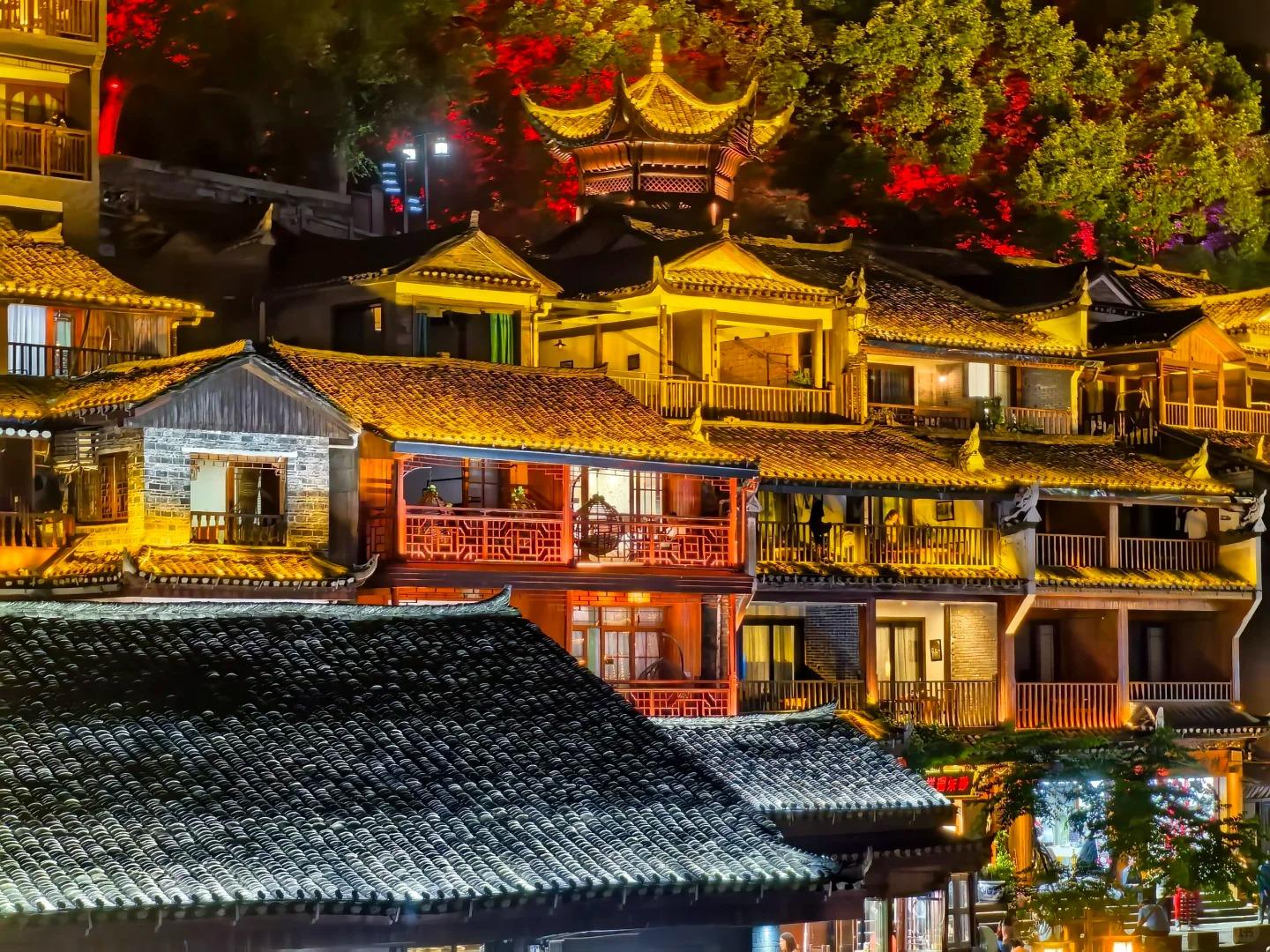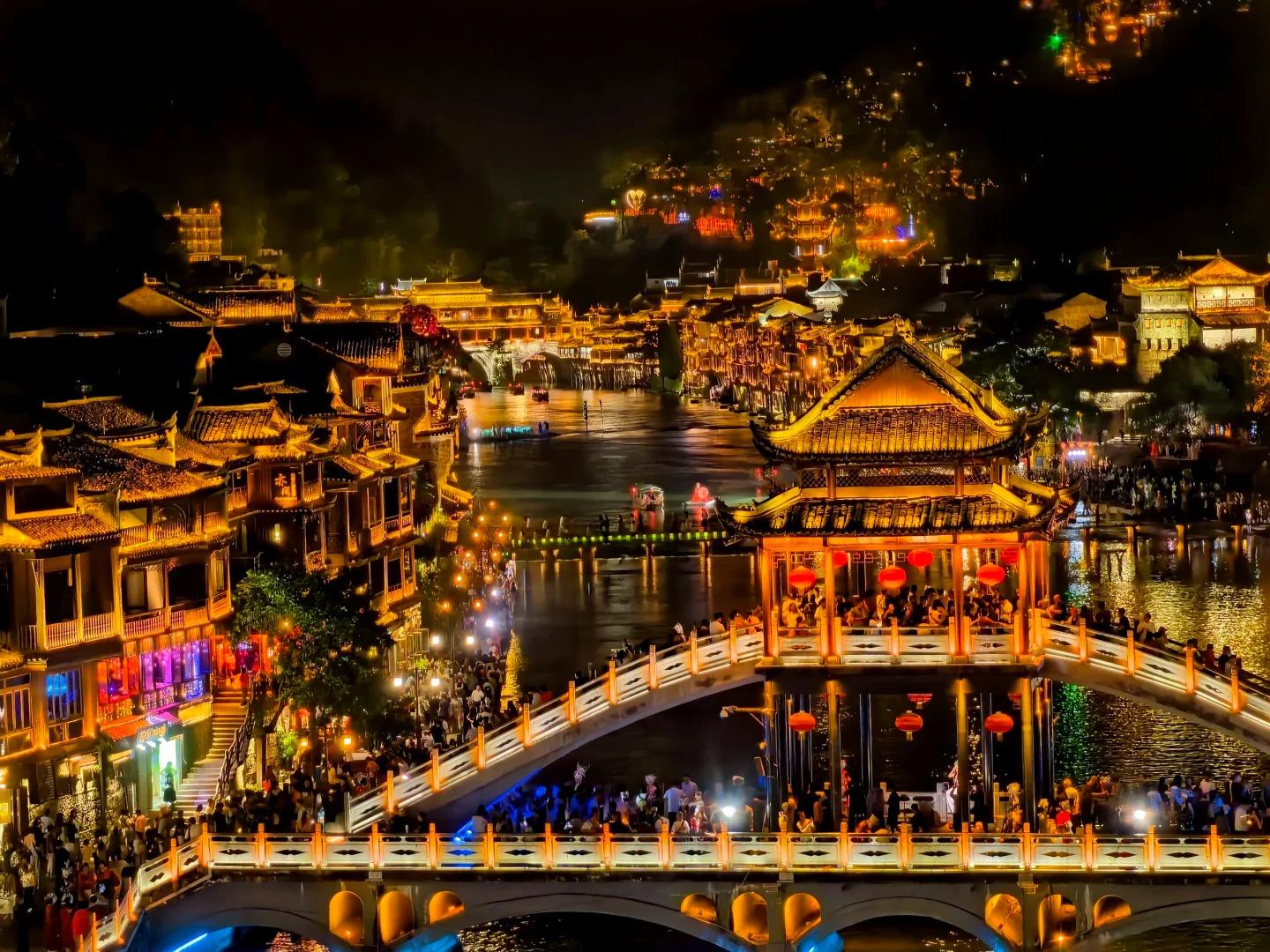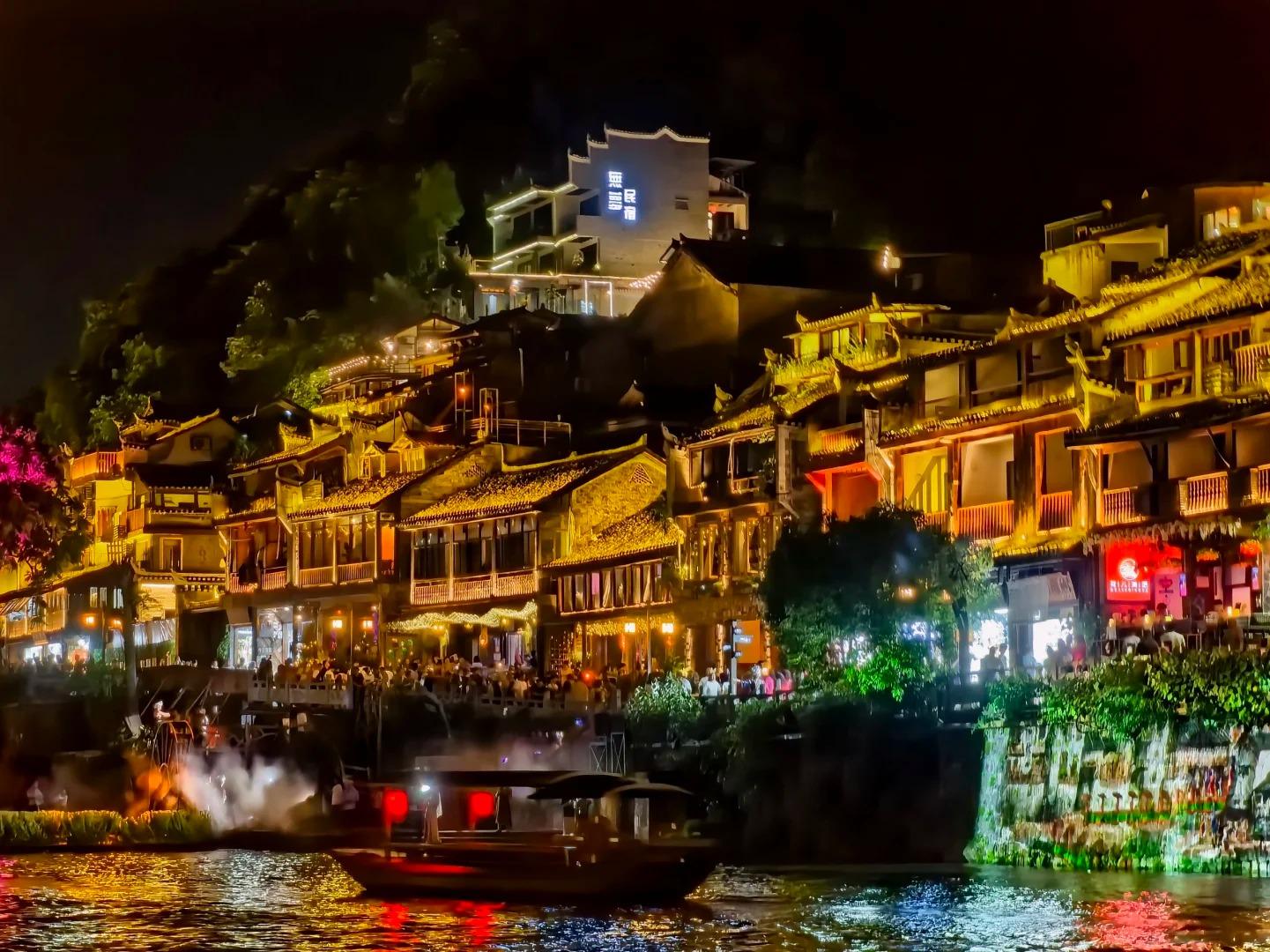Visiting Information
| Information | Details |
|---|---|
| Chinese Name | 凤凰古城 (Fènghuáng Gǔchéng) |
| Location and Address | Fenghuang County, Xiangxi Tujia and Miao Autonomous Prefecture, Hunan Province, China |
| Opening Hours | Open 24 hours (individual attractions within the town may have specific opening hours) |
| Entrance Fee | 148 CNY for a two-day pass (includes entry to major attractions within the town) |
| How to Get There | By Bus: Take a long-distance bus from major cities like Changsha, Zhangjiajie, or Huaihua to Fenghuang Bus Station By Taxi: Available from nearby cities, but can be expensive for long distances Note: There is no metro system in Fenghuang |
| Best Time for Visit | April to October for pleasant weather; avoid national holidays for fewer crowds |
| Contact Info | Phone: +86 743 3228718 Email: Not available |
Overview
Fenghuang Ancient Town, also known as Phoenix Ancient Town, is a well-preserved ancient town located in Hunan Province, China. Known for its stunning natural scenery, unique Miao ethnic culture, and well-preserved ancient architecture, it’s often referred to as “the most beautiful town in China.” The town is built along the Tuojiang River, with traditional stilt houses lining the waterfront, creating a picturesque and romantic atmosphere.
Historical Background
Fenghuang Ancient Town has a history dating back over 400 years to the Qing Dynasty. It was established as a frontier town to maintain peace between the Han Chinese and the Miao people. Over the centuries, it became an important political, economic, and cultural center in western Hunan. The town’s unique blend of Han, Miao, and Tujia cultures has been well-preserved, making it a living museum of Chinese history and minority cultures.

Architectural Features
- Diaojiaolou (Stilt Houses): These iconic wooden houses built on stilts along the Tuojiang River are a hallmark of Fenghuang. They showcase the ingenious architectural adaptation to the local terrain and climate, providing protection from floods and humidity while offering scenic views of the river.
- City Walls and Gates: The ancient city walls and gates, including the North Gate and East Gate, are well-preserved examples of traditional Chinese defensive architecture. These structures offer insights into the town’s historical importance as a frontier settlement.
- Hongqiao (Rainbow Bridge): This covered bridge spans the Tuojiang River and is a focal point of the town. Its elegant design combines functionality with aesthetic appeal, serving as both a crossing point and a scenic spot.
- Traditional Miao Houses: These dwellings showcase the unique architectural style of the Miao ethnic group, characterized by wooden structures, intricate carvings, and vibrant decorations that reflect their cultural heritage.
Cultural Importance
Fenghuang Ancient Town holds significant cultural importance as a living testament to the harmonious coexistence of multiple ethnic groups, primarily the Miao, Tujia, and Han. It preserves traditional customs, festivals, and ways of life that have largely disappeared in more modernized parts of China. The town’s cultural landscape, including its architecture, handicrafts, and local traditions, offers visitors a unique glimpse into the rich tapestry of China’s ethnic minority cultures.
Surrounding Attractions
- Shen Congwen’s Former Residence: This preserved home of the famous Chinese writer Shen Congwen offers insights into the life and work of one of China’s most important modern authors. Visitors can explore the rooms where he lived and wrote, gaining a deeper understanding of his literary contributions and the local culture that influenced his work.
- Huang Si Qiao Castle: Located about 30 kilometers from Fenghuang, this ancient castle is the largest and best-preserved earth castle in China. Built during the Ming Dynasty, it offers a fascinating look at traditional defensive architecture and the lifestyle of its former inhabitants.
- Longevity Palace: This Taoist temple complex, situated on a hill overlooking the town, offers panoramic views of Fenghuang and the surrounding landscape. It’s a serene spot that combines religious significance with natural beauty.
- Miao Villages: Several traditional Miao villages in the surrounding countryside provide opportunities to experience authentic Miao culture, including traditional music, dance, and crafts. These villages offer a more immersive cultural experience compared to the more touristy atmosphere of the ancient town itself.

Photography Opportunities
- Riverside Scenes: The iconic view of stilted houses along the Tuojiang River, especially when illuminated at night, offers breathtaking photography opportunities. The reflections in the water create stunning compositions, particularly during the golden hours of sunrise and sunset.
- Street Life: The narrow alleys and bustling streets of Fenghuang provide excellent opportunities for candid street photography, capturing the daily life and interactions of locals and visitors against the backdrop of ancient architecture.
- Cultural Performances: Traditional Miao performances, often held in public spaces or during festivals, offer vibrant and colorful subjects for photography, showcasing the rich cultural heritage of the region.
- Aerial Views: The surrounding hills and high points within the town, such as the city wall or nearby temples, provide excellent vantage points for panoramic shots of Fenghuang, capturing the town’s layout and its integration with the natural landscape.
Modern Importance
- Cultural Preservation: Fenghuang serves as a living museum, preserving traditional architecture, customs, and ways of life that are rapidly disappearing in other parts of China. Its well-maintained state offers valuable insights into Chinese history and minority cultures.
- Tourism Economy: The town has become a major tourist destination, contributing significantly to the local economy. Tourism has provided new employment opportunities and helped to revitalize traditional crafts and performances.
- Educational Value: Fenghuang offers important educational opportunities for both domestic and international visitors, fostering a deeper understanding of China’s ethnic diversity and historical development.
- Sustainable Development Model: The town serves as a model for how historical sites can be preserved and economically viable in the modern era, balancing conservation with development to create a sustainable tourism industry.

FAQ
- What is Fenghuang Ancient Town famous for?
Fenghuang Ancient Town is famous for its well-preserved traditional architecture, especially the stilted houses along the Tuojiang River, its rich Miao and Tujia ethnic culture, and its picturesque landscapes that have earned it the title of “the most beautiful town in China.” - What’s inside Fenghuang Ancient Town?
Inside Fenghuang Ancient Town, you’ll find ancient streets lined with traditional houses, temples, and shops selling local crafts and souvenirs. Key attractions include the Tuojiang River, stilted houses, Hongqiao Bridge, ancient city walls, and various museums and former residences of notable figures. - Is Fenghuang Ancient Town free?
While walking around the town is free, there is an entrance fee of 148 CNY for a two-day pass that includes entry to major attractions within the town. Some individual sites may have separate fees. - Is Fenghuang Ancient Town worth visiting?
Yes, Fenghuang Ancient Town is definitely worth visiting for its unique blend of natural beauty, well-preserved traditional architecture, and rich cultural heritage. It offers a rare glimpse into China’s past and the cultures of its ethnic minorities. - What to do in Fenghuang Ancient Town?
In Fenghuang Ancient Town, you can explore the ancient streets, take a boat ride on the Tuojiang River, visit museums and historical sites, enjoy local cuisine, watch cultural performances, shop for traditional crafts, and experience Miao and Tujia cultures. - How do I get to Fenghuang Ancient Town in the local city?
Fenghuang Ancient Town is located in Fenghuang County, Hunan Province. The nearest major city is Zhangjiajie. From there, you can take a long-distance bus (about 4 hours) to Fenghuang Bus Station. Alternatively, you can fly to Tongren Airport (about 1.5 hours from Fenghuang) and then take a bus or taxi to the town. - How to visit Fenghuang Ancient Town?
To visit Fenghuang Ancient Town, plan to spend at least two days to fully explore the area. Purchase the town entrance ticket for access to major attractions. Walk along the river, explore the ancient streets, visit key sites like Hongqiao Bridge and the East Gate, and consider taking a night tour to see the town illuminated. Stay in a guesthouse within the old town for a more immersive experience.




